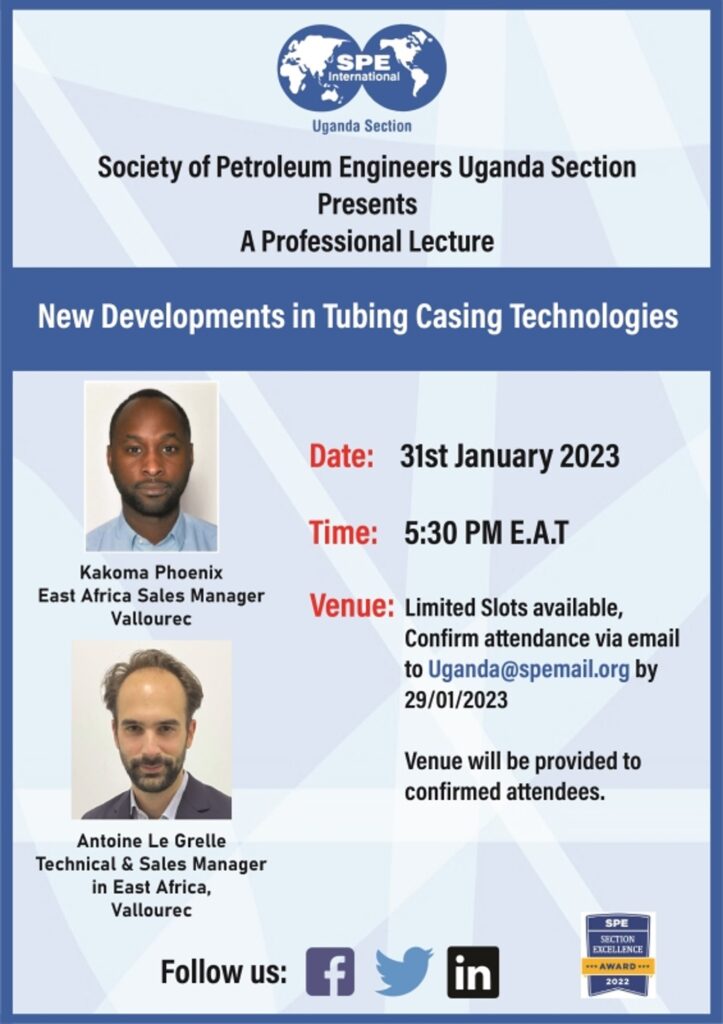Tue, 10 Oct 2023
🕒 📍 Virtual
This presentation began with an overview of the three main trenchless technologies used in the Tilenga project: auger boring, pipe ramming and horizontal directional drilling (HDD). It then focused on HDD, covering its general methodology, basic calculations and software used. It included a review of the design process, steering plan, and the actual execution of the HDD operation on the project.
🔘 View Video
🔘 More Info
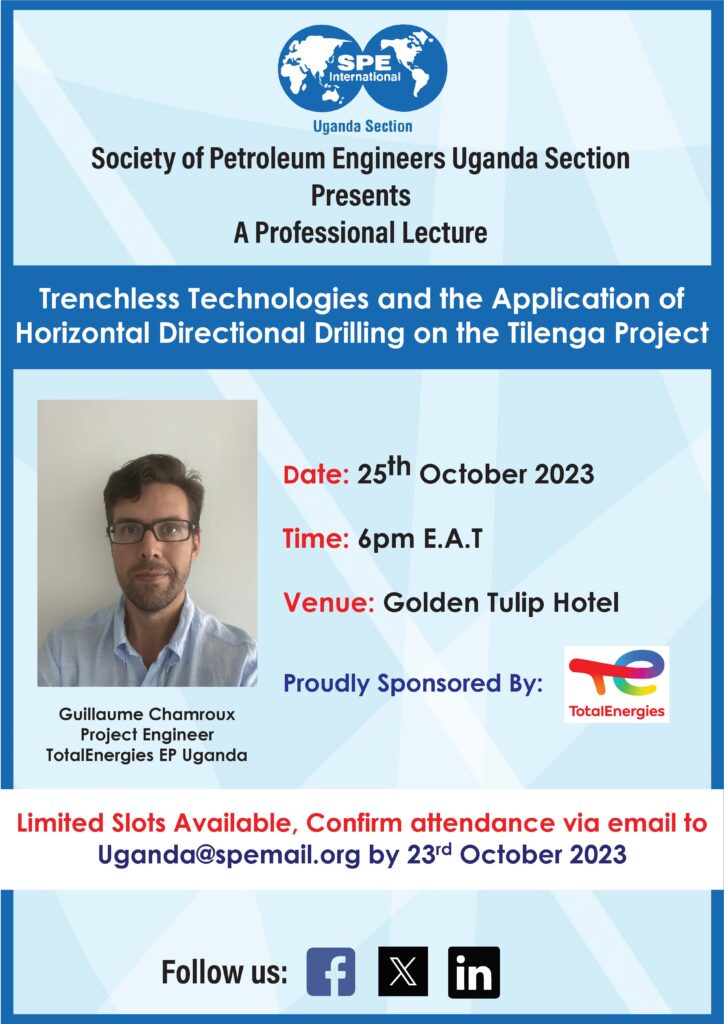
Thu, 14 Sep 2023
🕒 📍 Virtual
An overview of the financial risks and risk events for the development of oil and gas projects. A review of bankability and financial viability indicators. A case study of an upstream project with a CAPEX of USD 3.5 billion, annual OPEX of USD 250 million and annual production of 200,000 barrels per day was presented.
🔘 View Video
🔘 More Info
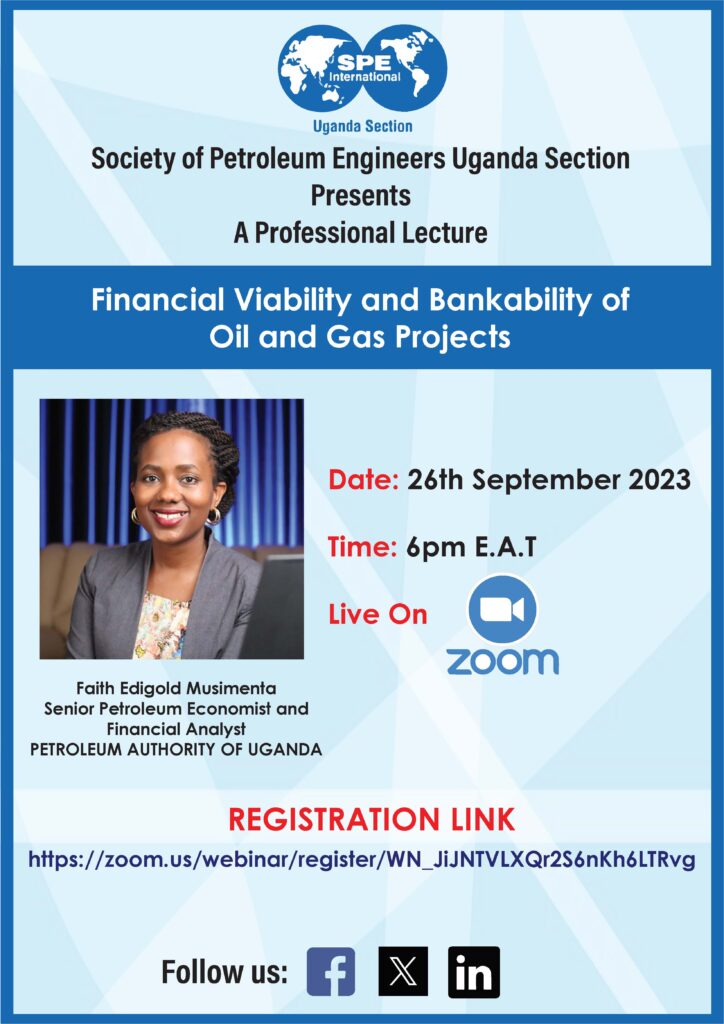
Thu, 24 Aug 2023
🕒 📍 Virtual
This session demystified Artificial Intelligence (AI) and Machine Learning (ML), exploring their potential within the petroleum industry and presenting real case studies of successful application in seismic data analysis, reservoir modelling, production optimization, and equipment failure prediction.
🔘 View Video
🔘 More Info
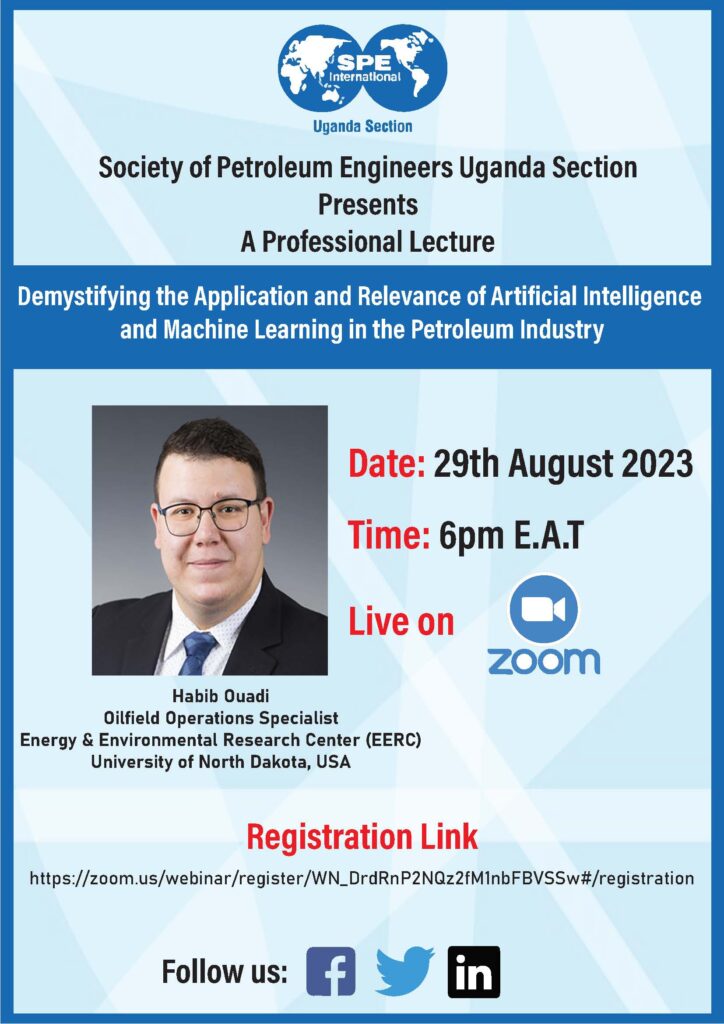
Thu, 27 Jul 2023
📍 Virtual
This presentation looked at the geological history of the rift basins in the western arm of the East African Rift System, with a focus on the Semliki, Kaiso Tonya and Pakwach areas in the Lake Albert Rift Basin. It reviewed the methods used in the geological survey, findings and implications for petroleum exploration.
🔘 View Video
🔘 More Info
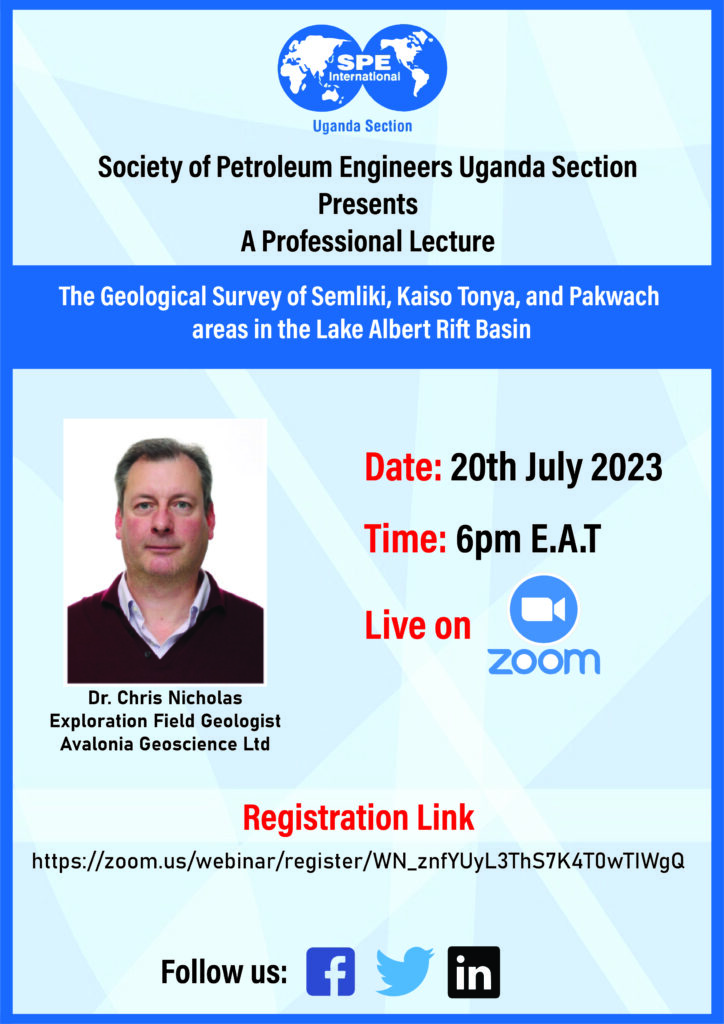
Thu, 15 Jun 2023
🕒 📍 Virtual
This session presented the latest innovations in casing and tubing technologies. It covered new materials, connection designs, and enhanced corrosion resistance techniques, aiming to improve well integrity, operational efficiency, and cost effectiveness in oil and gas drilling operations.
🔘 View Video
🔘 More Info
